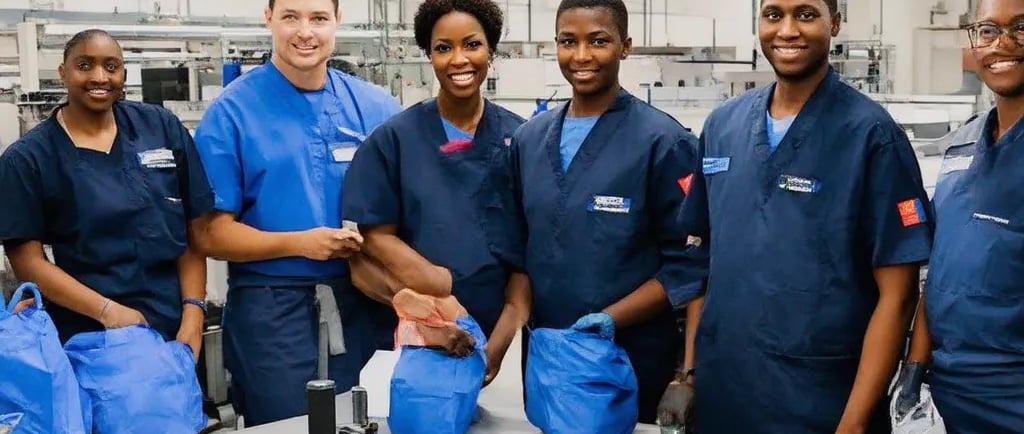The Future of Advanced Manufacturing Workforce
WORKFORCE DEVELOPMENT
1/10/20252 min read


The advanced manufacturing industry, particularly in 3D printing and additive manufacturing (3DP/AM), is growing rapidly. However, as highlighted in the America Makes Roadmap for Advanced Manufacturing Workforce report, the industry is facing a significant shortage of skilled workers. This blog explores the key challenges in workforce development and the solutions needed to bridge the skills gap for the next generation of advanced manufacturing professionals.
The Growing Demand for Skilled Workers in 3DP/AM
The demand for middle-skilled technical workers in 3DP/AM is projected to increase from 3,100 jobs today to 19,400 by 2030, with an estimated 27,300 cumulative job openings over the next decade. However, despite these promising opportunities, training programs are insufficient to meet industry demands.
Key Workforce Challenges:
🚧 Skills Gaps in Technical Training – New hires often lack critical problem-solving, quality assurance, and digital collaboration skills.
🚧 Limited Training Programs – The U.S. needs 160+ additional training programs to meet 3DP/AM industry needs.
🚧 Hiring & Retention Struggles – Firms report long hiring cycles (3-4 months) and difficulty retaining talent.
If these gaps remain unaddressed, they could slow down industry growth and limit U.S. competitiveness in advanced manufacturing.
Top Solutions for Workforce Development
1. Industry-Aligned Training & Education Programs
Expand Community College & Apprenticeship Programs – Establish hands-on technical training focused on 3DP/AM technologies.
Develop National Certifications – Standardize industry-recognized credentials to ensure consistent workforce competency.
Integrate Digital & Soft Skills – Include critical thinking, teamwork, and digital collaboration as part of technical training.
🔹 Example: Massachusetts estimates 540 openings for middle-skilled workers in 3DP/AM, requiring at least three new specialized training programs in the state.
2. Strengthening Employer-Education Partnerships
Create More Internship & Apprenticeship Opportunities – Partner with local businesses to provide real-world job experiences.
Launch Rotational Training Programs – Allow students to gain experience in multiple areas of advanced manufacturing.
Promote Workforce Diversity Initiatives – Increase access for underrepresented groups to enter high-growth manufacturing careers.
🔹 Example: The Urban Institute’s Additive Manufacturing Technician Program is developing industry-aligned workforce training nationwide.
3. Closing the Skills Gap with Modern Training Approaches
The report highlights specific high-priority skills that are essential for 3DP/AM jobs but are lacking in current training programs:
🚀 Top High-Demand Skills for 3DP/AM Technicians:
✔ Quality Assurance & Testing – Ensuring precision in manufactured parts.
✔ Digital Tool Proficiency – Using CAD software, CNC tools, and digital collaboration platforms.
✔ Critical Thinking & Problem-Solving – Diagnosing and troubleshooting technical issues.
Training Recommendation: Schools and training centers should prioritize hands-on, practical learning experiences that simulate real manufacturing environments.
The Path Forward: Investing in America’s Advanced Manufacturing Workforce
The 3DP/AM industry is poised for massive growth, but without urgent investments in workforce training, the U.S. risks falling behind. To build a sustainable talent pipeline, we must:
💡 Expand technical education & certification programs
💡 Develop hands-on training & apprenticeship opportunities
💡 Ensure workers develop both technical & soft skills
By aligning education with industry needs, we can equip the next generation of workers with the skills required for high-paying, stable careers in advanced manufacturing.
